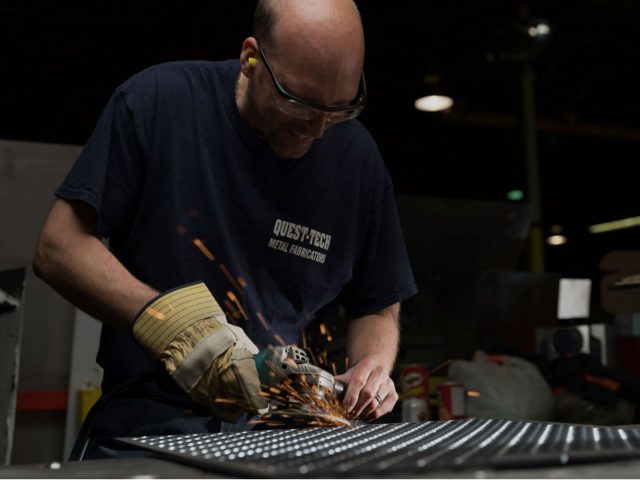When it comes to MIG welding vs TIG welding applications, the two methods have similarities—they are two arc welding types that use metal electrodes with an inert gas to shield from oxidation and contaminants at high temperatures. Both types of welding processes are used in numerous industries. TIG was developed for aerospace applications in the manufacture of aircraft. Thousands of MIG welds are necessary to assemble automobiles. Infrastructure, architectural, and construction projects are held together by MIG and TIG welds, as are ships, shipping containers, and railroads. Even the computer you are reading this article on is assembled, in part, with welds.
MIG Welding vs TIG Welding
Though both processes can be performed with many common metals, there are differences between the two. Each with their advantages and disadvantages. Let’s take a closer look:
MIG Welding
MIG welding is a method of welding that utilizes electricity to join pieces of metal together. MIG is the acronym for Metal Inert Gas. The process is also referred to as Gas Metal Arc Welding (GMAW) and Metal Active Gas welding (MAG). As the former name suggests, it is an arc welding method. It combines a consumable metal electrode deposited as a filler and a shielding gas to cover and protect the welding area from contaminants. Nicknamed the “hot glue gun,” it is a user-friendly process known for its speed and efficiency.
MIG welding was developed in the 1940s to weld non-ferrous metals, specifically for welding aluminum, and then was adapted for use with other metals. Today, by giving a faster welding rate than other welding processes, its primary benefit is in welding metal much more quickly than other traditional “stick welding” techniques.
A MIG weld requires a wire to be connected to a direct current source that acts as an electrode to join two pieces of metal as it continuously passes through a welding gun. The main shielding gas used is Argon (Ar), which, depending on the metal and application, is combined with other gases, most commonly carbon dioxide, helium, or oxygen. For example, a MIG weld of stainless steel would require a gas mixture composed of 90% helium, 7.5% argon, 2.5% carbon dioxide.
In addition to the increased welding rate that produces long, continuous welds much faster, the shielding gas protects the weld area. It provides an aesthetically pleasing weld with minimal splatter. However, for some of the same reasons—it requires shielding gas and rolls of wire—there are also a few drawbacks. The whole MIG system is not very portable. A tank of gas can weigh a hundred pounds—spools of wire range on average from 10 to 60 pounds and more. Finally, a MIG welder is heavy—lightweight models start at around 65 pounds. Because it uses a shielding gas, to be effective, MIG welding is best applied inside where there is no wind. The consumable parts of a MIG welder—its tips, nozzles, and liners—need to be replaced regularly at an ongoing cost. MIG welding also creates a degree of fumes, sparks, and smoke, making it a less clean process.
TIG Welding
TIG welding is named for the tungsten electrode and the inert gas sheathing that surrounds it. TIG is the acronym for Tungsten Inert Gas, short for Gas Tungsten Arc Welding (GTAW). The tungsten electrode is non-consumable, and, unlike MIG welding, only Argon gas is used. Argon sufficiently protects and cools the tungsten, creating less smoke than other gases and a cleaner process, with the added benefit of preventing oxidization.
A foot pedal controls a TIG welding arc. Thus, in operation, TIG welding is a semi-automatic process. It is used principally in joining non-ferrous metals (though it can be used in iron alloy applications). Because it produces fine, precise, sound welds, it is ideal for critical joints and the welding of thin metal sections on thinner metals. The method has a very stable arc and can be used with or without filler, eliminating oxidation residue and resulting in a simplified final cleaning process. However, the complexity of the TIG welding process and its cost are drawbacks compared to MIG welding. The setup for TIG welding also requires more time and effort.
The main differences between MIG and TIG Welding start with the electrodes. Specifically, TIG is a tungsten electrode, and the MIG electrode is the same metal being welded. Where MIG welding electrodes are consumable and act as the filler, TIG electrodes are non-consumable with the filler being provided. Argon’s shielding gas is mixed with other gases in MIG applications, whereas TIG applications only use Argon gas. TIG welding involves less contamination than MIG welding, but it also requires a greater degree of expertise than the more user-friendly process of MIG welding.



